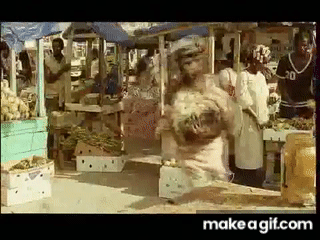Why study the media?
The media is everywhere! Almost every one of us uses it every day. It’s something we might not necessarily think about consciously but is all around us, and we’re always using it. It’s exciting and evolving, no longer is the media limited to a black and white sheet of paper. It’s on our phones… we carry the media around with us almost everywhere we go.
Media. Communicating a message to many people. This comes in many different forms…
Print media
Newspapers are perhaps one of the oldest forms of media, dating back 353 years from current day, the first documented newspaper was published, the “Oxford Gazette” . they’ve been there from the beginning, informing people of the latest news. The national daily newspapers are newspapers that like they sound, report on national news every single day. “The Daily Courant”, the first daily newspaper began in March 1702. According to (agilitypr.com) the bestselling newspaper by circulation today is “The Sun”, a tabloid newspaper, which started in 1964. However The Sun and many of its competitors have moved towards the online approach, as newspapers are in circulation less and less as technology advances.
Books may not appear to many as a form of “media” however they entertain, communicate, encourage people to form certain opinions and can change people’s views. Books are also like most forms of media, evolving with the introduction of technology. This means many people now prefer to read an eBook. One of most successful writers, famous for her Harry Potter series of books, sold more than 400 million copies worldwide, so clearly books are still relevant!
Magazines, another form of print media. Which instead of reporting news events like the newspaper. Are specifically targeted towards a certain audience with different magazines having their own niche or subject. The first magazine published in the UK was in 1731 and was called “The Gentlemen’s Magazine”. Today according to (betterretailing.com) TV Choice is the UKs top selling magazine, with a current circulation of 1,219,107 per week. It’s quite interesting that the top selling magazine happens to be a magazine about Television, another form of media.
Broadcast media
Television is a form of broadcast media that unlike most reaches 95.5% of the UK, this is a large proportion and is still currently the most popular form of mass media. Our TVs broadcast the news 24 hours a day, there are also factual documentaries, sport, children’s TV programmes, and entertainment channels and even films are included in this spectrum. In 1936 The British Broadcasting Corporation began broadcasting, this at the time was the only channel available, and only transmitted in a small area. So now there is up to 600 different channels available to certain Sky TV users (package dependant).
Television has been used to broadcast the biggest events in history. In 1969, when man first set foot on the moon, an estimated 530 million people worldwide watched this giant leap for mankind, which is an incredible feat in my opinion.
The Radio, invented in 1920 by Guglielmo Marconi Marconi is an audio only form of media. Today radio is still popular, with 9 out of 10 adults listening at least once per week, in fact according to (bbc.co.uk) BBC music radio’s reach to all ages has grown since 2009/10. The number of radio stations in the UK currently stands at 290.
The internet
Perhaps the most relevant form of the media currently is the internet. This is particularly the most relevant to the younger generation where it has made a huge difference our lives, in both positive and negative ways.
Social media is huge. It is basically communicating and sharing online with other people. Starting in the early 2000s with websites such as Myspace (which has nearly 1 billion active and inactive users) and LinkedIn (half a billion users) which brought along the idea of connecting with friends and family via the internet, allowing them to communicate via a system unlike telephone. YouTube started in 2005 introducing the concept of video sharing. Today 300 hours of video are uploaded to YouTube every minute. Facebook and Twitter came along in 2006 which elaborated on the original idea that was introduced by Myspace and LinkedIn. It snowballed from there on, and for our current generation it would be hard to imagine a world without social media.
One of the unattractive sides to social media is how it is slowly decreasing our social skills and abilities. For example, choosing a Facetime call over a face-to-face interaction. It can have a detrimental effect to mental health, with depression being a problem when people compare themselves and their lives to others, being cyberbullied, associating the number of followers someone has with their popularity. All these things can lead to a feeling of loneliness and isolation.
Video games, yes part of entertainment media. I particularly wanted to mention this as I have personally spent many hours playing them! Although they can be played alone, online gaming allows for mass communication in certain situations, allowing contact with others from all over the world, and effectively puts this firmly into the media category. There is an estimated 2.2-2.6 billion gamers worldwide which shows how big of a media platform this is.
Conclusion
To sum up the question of “why study the media”. Media has always been part of my life without me really knowing it, from watching films and TV, listening to music, or even playing video games. From Instagram and Snapchat, which is definitely a large part of my social life – it is relevant, exciting, constantly evolving and quite simply media is the future.
Resources
Statista.com
Wikipedia
Study.com
999inks.co.uk
Throughfullearning.com
Quora.com
Fortune.com
Smallbiztrends.com
Ukie.org.uk

















